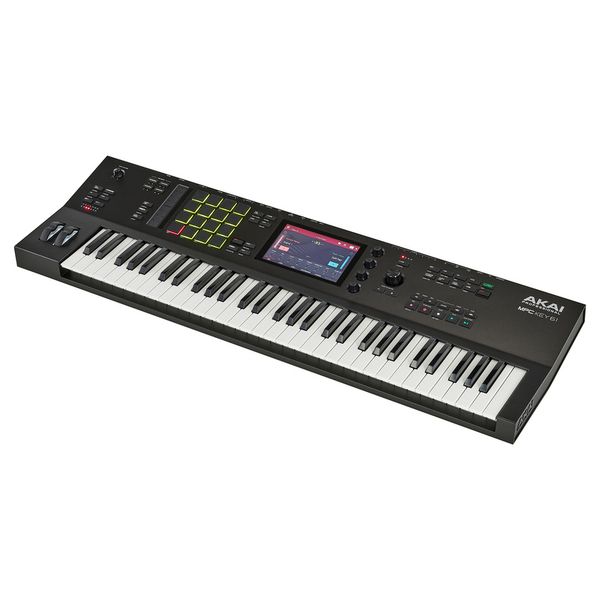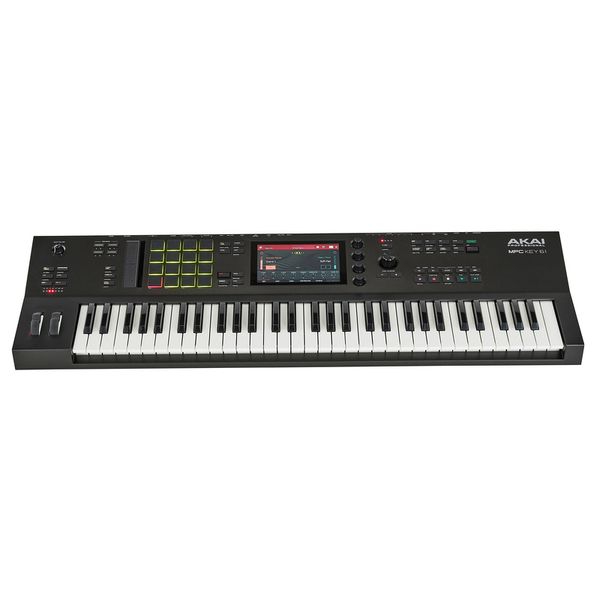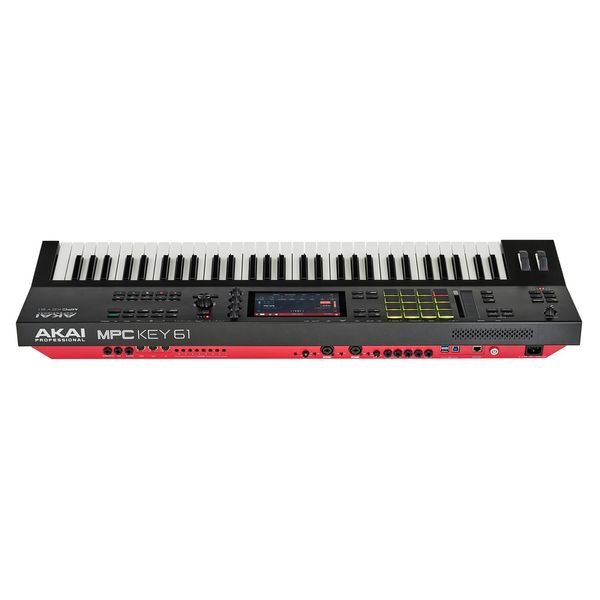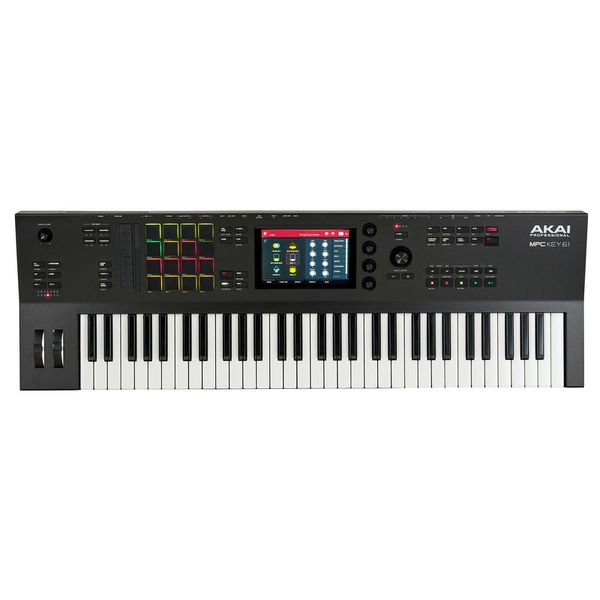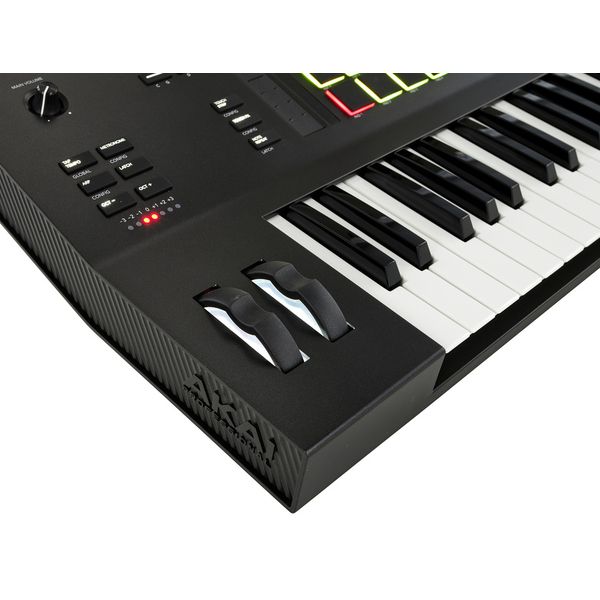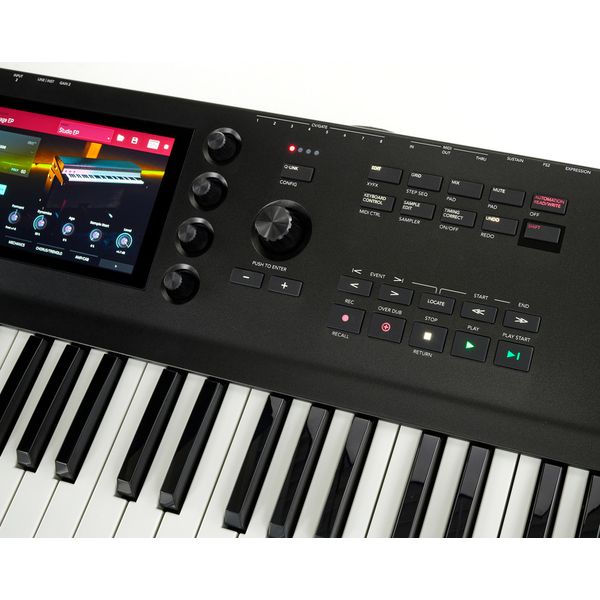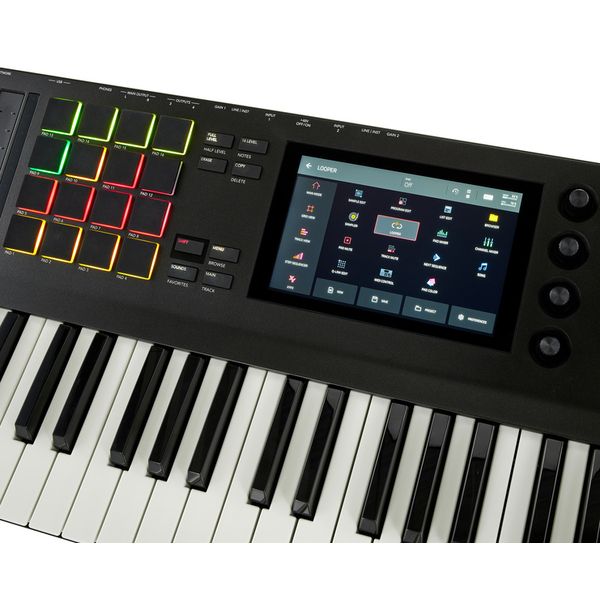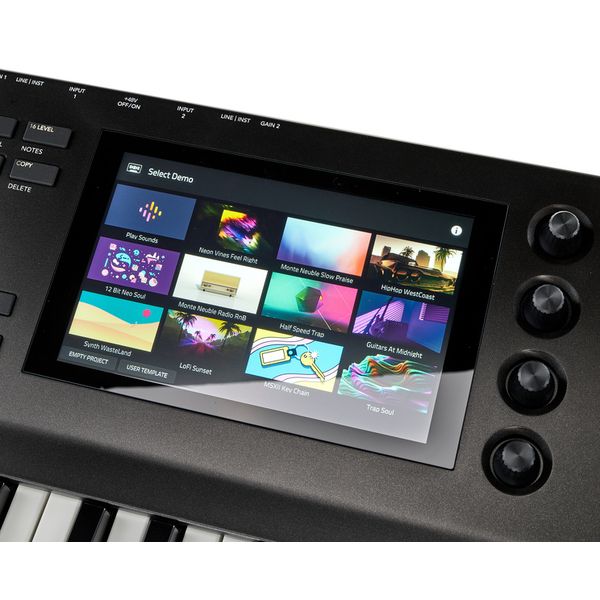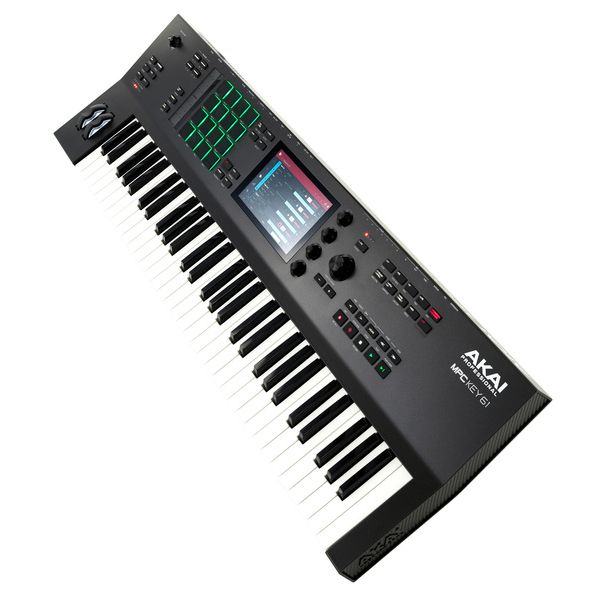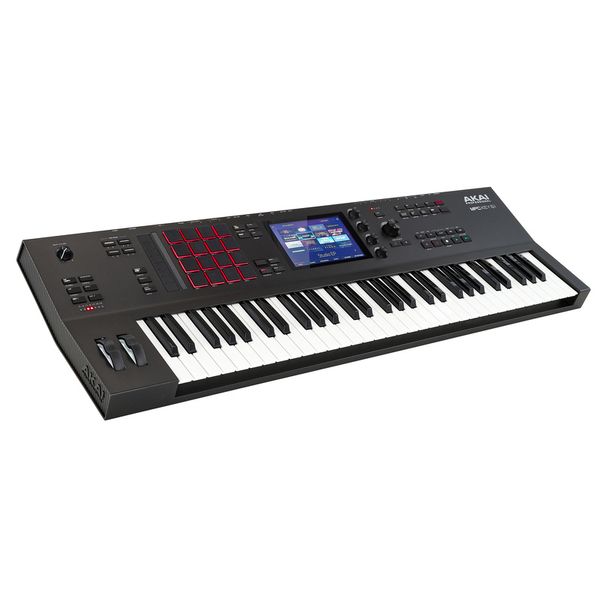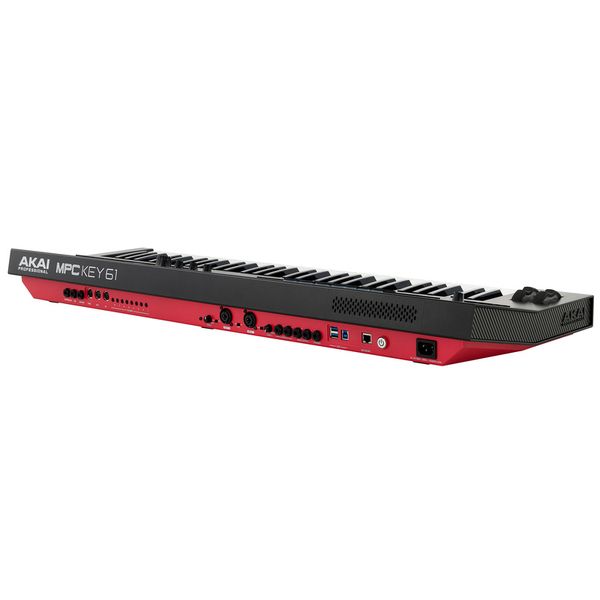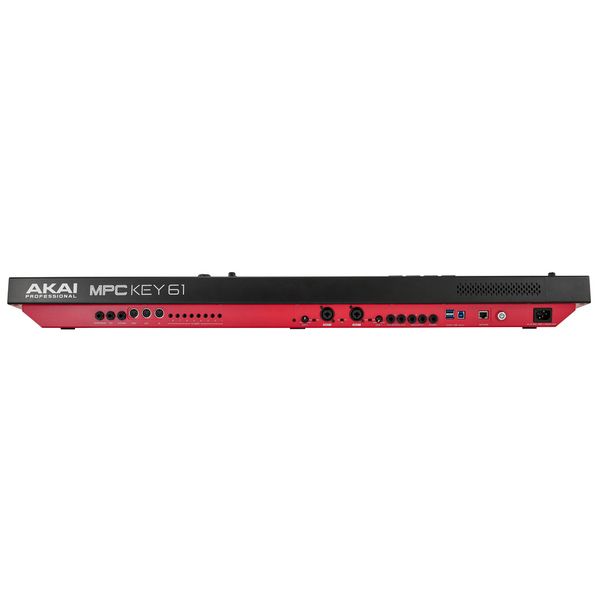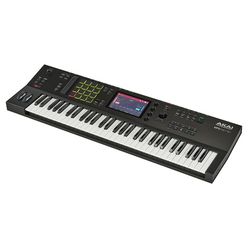Standalone MPC Synthesizer Keyboard
- 61 Semi-weighted keys
- Velocity sensitive keys with aftertouch
- More than 6000 preset sounds and 25 plug-in instruments
- 100 Multi-effect algorithms
- 16 Velocity-sensitive RGB pads (8 pad banks)
- Assignable Touch Strip controller
- 7" Colour multi-touch display with gesture control
- 4 Q-Link encoders and push encoders
- 4GB RAM
- 32GB Internal memory, expandable via SATA connector for optional hard drive
- MPC DAW with MIDI and audio recording
- WLAN- and Bluetooth-enabled
- 4 Line outputs: 6.3 mm jack
- Stereo headphone output: 6.3 mm jack
- 2 Mic/line inputs: XLR/TRS combo jack, 48 V phantom power
- 8 CV/gate outputs: 3.5 mm jack
- MIDI In / Out / Thru
- 3 Inputs for pedals and footswitches: 6.3 mm jack
- 2 USB-A 3.0 ports for USB mass storage or MIDI controller
- USB host port
- Ethernet link port
- Dimensions (W x D x H): 986 x 313 x 96.7 mm
- Weight: 8.1 kg
- Incl. USB cable, power cable, Quickstart Guide and MPC2 Desktop DAW for Mac and PC (download)
MPC goes keyboard
:format(png))
Thanks to their groove-oriented and sample-based operating principle, Akai's MPC devices have built up a whole community of committed followers. The use of the now-legendary pads in their 4x4 layout for triggering drums and samples has created its own philosophy and aesthetics, which enjoy particular popularity in the Hip-Hop scene. Akai's new MPC workstation now expands on this concept by combining a keyboard with the installed plug-in instruments so that musicians who want to combine typical MPC grooves with their own melodies, harmonies, and diverse sounds as well as record vocals and instruments in the workstation will also be interested. Like all of the other MPC units, this keyboard version can also be used to control external devices and manage complex setups as the central component of a DAW-less studio.

Sampling workstation with plug-ins
The MPC Key 61 features a keyboard with 61 velocity-sensitive keys together with 16 dynamic sample pads, and the device also features aftertouch sensitivity (monophonic for the keyboard and polyphonic for the pads). With 4GB of RAM, a Quad ARM processor, WLAN/Bluetooth connectivity, and an SATA slot, it offers an even higher performance capability than the existing MPC devices. 25 plug-in engines have been integrated that place a wide range of acoustic instruments, electric pianos, synthesizers, and drums at the user's fingertips. The instruments and sample sets can be mixed internally on the device and edited using a selection of over 100 effects. The workstation is equipped with an audio interface that has two high-quality microphone preamps which can be used to record samples as well as complete vocal and instrumental parts. For (pre-)production purposes, these can be arranged in eight audio tracks alongside the 128 MIDI tracks provided by the sequencer. What is more, additional synthesizers and interfaces can be connected via the USB, MIDI, and CV/gate connections.
:format(jpeg))
:format(jpeg))
DAW-less music production
Whether you prefer to work on a computer or using hardware is simply a matter of personal preference, not a question of which is "better". Sampling grooveboxes like the MPC have carved a particularly prominent niche for themselves in Hip-Hop music. Thanks to its keyboard and instrument plug-ins, however, the MPC Key 61 is significantly more flexible for harmoniously structured musical styles that contain more melodious elements and makes "DAW-less" production more accessible for R&B, progressive Pop, vocal-oriented House, and powerful Drum & Bass music. With more “traditional” MPC devices, users rely on what they touch, hear, and feel. The same characteristics are found here, with the addition of a large touch screen at the centre of the user interface that provides direct access to all of the tools and options needed in modern musical production.
:format(jpeg))
About Akai Professional
Akai Professional has its origins in the long-established Japanese company Akai, founded in 1929, which initially manufactured electric motors, soon to be followed by high-quality tape recorders and hi-fi products. Since 1988, Akai has also become a household name like no other on the Hip-Hop scene. With the development of its first MIDI Production Centre (MPC for short), created in collaboration with Roger Linn, Akai wrote history by decisively influencing the sound of Hip-Hop and electronic music, which it continues to do to this very day. Famous exponents of the MPC series include DJ Shadow, Eminem, and Kanye West. Today, Akai is also well known for its robust and versatile USB MIDI controllers, not least of which is the bulletproof APC range of Ableton controllers.
:format(jpeg))
:format(jpeg))
New studio control centre
Despite the fact that the MPC Key 61 is equipped with a sampler, sequencer, and plug-ins, external equipment can also be added to your studio control centre. Up to 32 MIDI devices can be controlled via USB and, accordingly, a class-compliant audio interface can be used to increase the number of available audio inputs. Additionally, analogue synthesizers and modular systems can be controlled using the eight configurable CV/gate connections, via which sounds and sequences can be recorded and further edited in the sampler. For more extensive projects, the MPC Key 61 can be connected to the MPC2 Desktop DAW included in the scope of delivery, which allows even more tracks as well as additional VST/AU plug-ins to be used and the keyboard to be integrated into the software. Alternatively, MPC2 can be used as a plug-in in other DAWs.
This is what customers who viewed this product bought
-
AKAI Professional Synthesizers at a glance
-
Display Synthesizers from $ 1000 - $ 1500
-
Go to product group Synthesizers
-
Go to product group Workstations
-
Go to product group Synthesizers
-
Go to product group Keys
-
Show manufacturer details for AKAI Professional
-
AKAI Professional Keys at a glance





